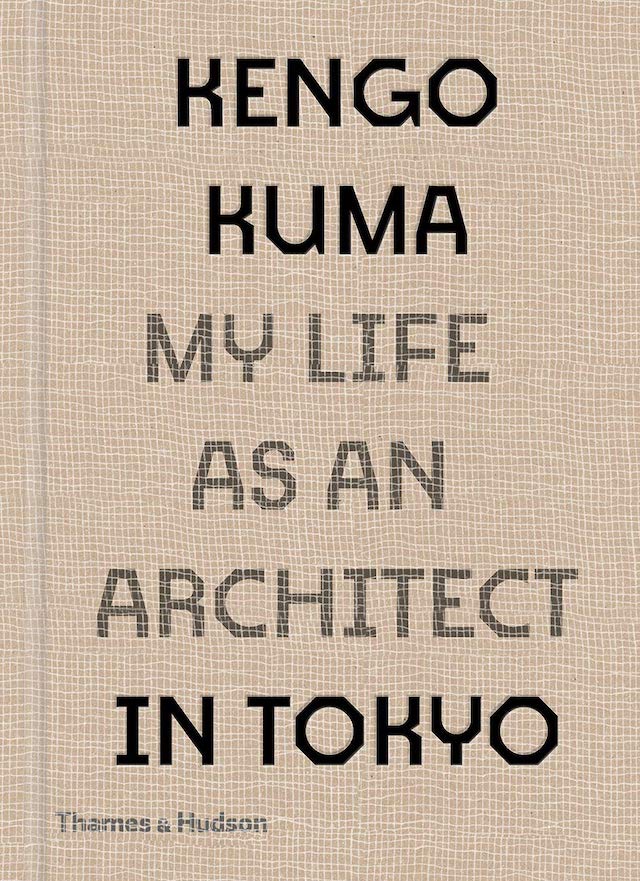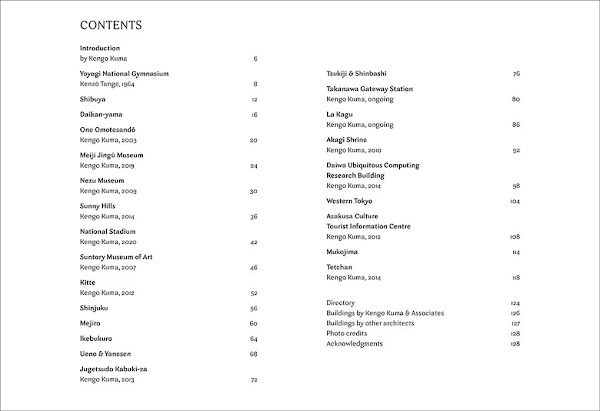My Life as an Architect in Tokyo
My Life as an Architect in TokyoKengo KumaThames & Hudson, February 2021Hardcover | 5-1/2 x 7-1/2 inches | 128 pages | 50 illustrations | English | ISBN: 978-0500343616 | $24.95PUBLISHER'S DESCRIPTION:Tokyo is Japan’s cultural and commercial epicenter, bursting with vibrancy and life. Its buildings, both historical and contemporary, are a direct reflection of its history and its people.Kengo Kuma was only ten years old when he found himself so inspired by Tokyo’s cityscape that he decided to become an architect. Here he tells the story of his career through twenty-five inspirational buildings in the city. Kuma’s passion is evident on every page, as well as his curiosity about construction methods and his wealth of knowledge about buildings around the world, making this a unique commentary on Tokyo’s dynamic architecture.Kengo Kuma is one of the world’s leading architects and a professor in the department of architecture at the University of Tokyo. He is widely known as a prolific writer and philosopher and has designed many buildings in Japan and around the world. He is the architect of the New National Stadium for the Tokyo 2020 Olympics.REFERRAL LINKS: dDAB COMMENTARY:On July 23, the pandemic-delayed Summer Olympics are set to open with ceremonies at the National Stadium in Tokyo. Designed by Kengo Kuma & Associates, the new stadium replaces the old National Stadium completed a few years before Tokyo hosted the 1964 Olympic Games. That building is not to be confused with the two venues designed by Kenzo Tange for the same postwar Olympics: the Yoyogi National Gymnasium is a seminal work of modern architecture and is set to be one of the venues for the 2020 Games. Yoyogi National Gymnasium is also the first building discussed by Kengo Kuma in My Life as an Architect in Tokyo, a compact, breezy book whose release coincides fairly well with the Olympic Games. In it, Kuma describes buildings his firm has designed and building that have influenced him, structured as a clockwise tour through a half-dozen "villages" in the Japanese metropolis: Shibuya, Shinjuku, Mejiro, Ikebukuro, Ueno, and Shinbashi. The book follows the circular Yamanote Line, which he draws in the introduction (second spread, below); the book alternates between buildings by other architects on beige paper and his own buildings on white paper.If the Olympics were taking place in Tokyo without the coronavirus keeping most fans at home, I'd say this book was a missed opportunity, since it is structured and reads at times like a guidebook but is not really usable as one. Yes, there's a directory at the back of the book, with addresses of all the buildings that he discusses, but the only map is Kuma's introductory sketch. In other words, it's hard to get one's bearings in the pages of the book, unlike, for instance, Atelier Bow-Wow's two atypical guidebooks to Tokyo. But given that most people will read this book from a distance (who knows if My Life would have been released in time for the Olympics if they happened last summer as originally planned), it's not necessary for it to function as a take-along guide. As such, the most commendable part of the book is its conversational tone; Kuma writes here in a more leisurely way than, for instance, the essays collected in Architecture of Defeat. With just a few dozen illustrations, and most of them sketches by the architect, people with some knowledge of Kuma's projects, as well as the others he mentions, will probably get the most out of the book. Nevertheless, I found myself enjoying the book most when he discusses projects I didn't know about, such as the wooden staircase outside La Kuga, the adaptive reuse of a publisher's warehouse. It's one of many Kengo Kuma buildings in Tokyo I just realized I want to visit — if and when I make it back there.SPREADS:

Kengo Kuma
Thames & Hudson, February 2021
Hardcover | 5-1/2 x 7-1/2 inches | 128 pages | 50 illustrations | English | ISBN: 978-0500343616 | $24.95
PUBLISHER'S DESCRIPTION:
REFERRAL LINKS:
SPREADS:









